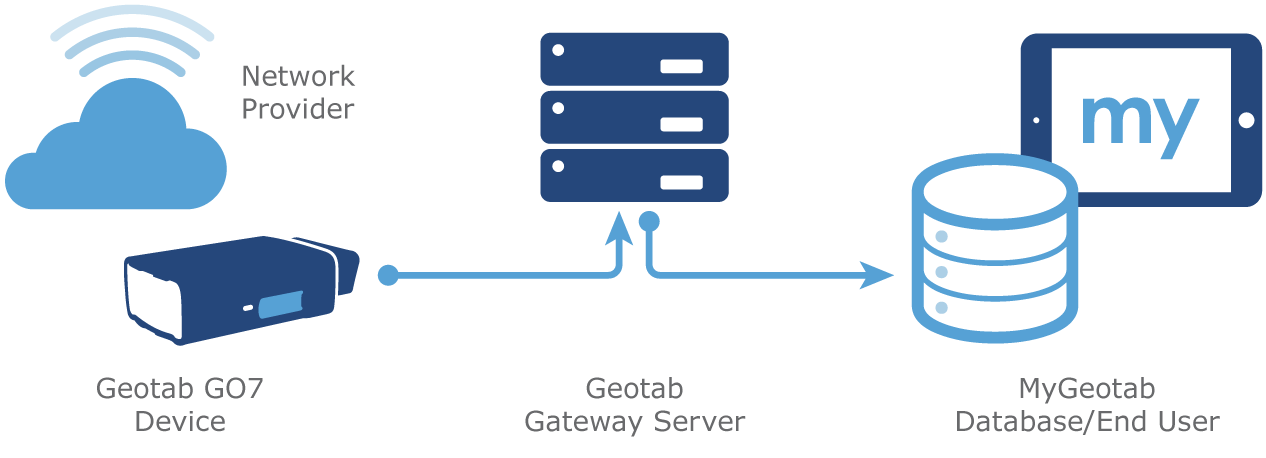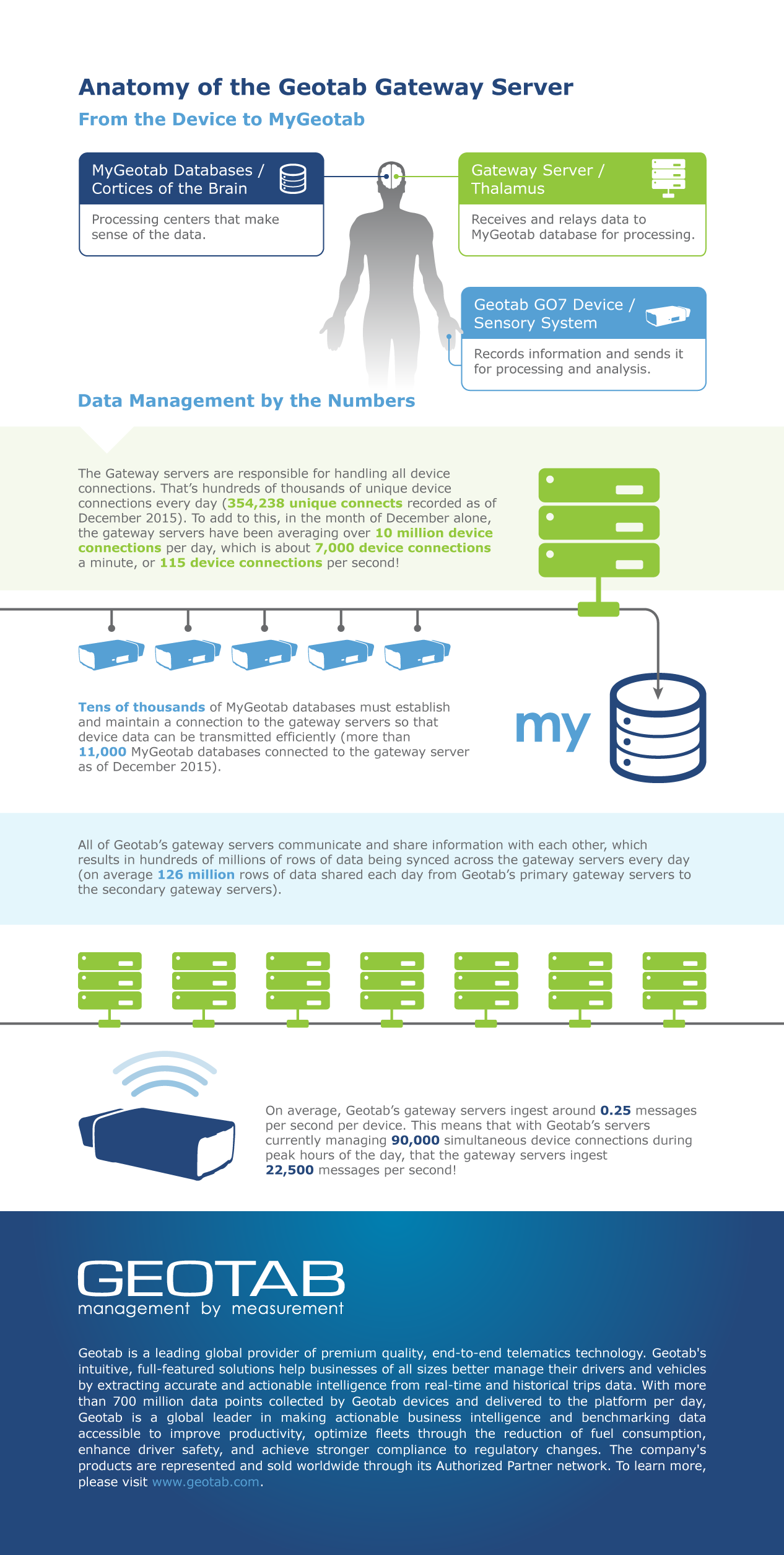Data management at Geotab [infographic]
Geotab’s Gateway server is the critical link - always working behind the scenes. Learn more about Geotab's data transmission process.
By Geotab Team
May 16, 2016
Updated: Mar 8, 2023

Many Geotab customers may be familiar with data management and how the data transmission process works:
- Geotab GO7 telematics device records detailed information.
- Data is sent via a network provider to Geotab.
- Same data appears in the MyGeotab fleet management software portal ready for reporting.
Interested in learning more? This article describes the other links in the chain and how they are managed by Geotab.
Unsung Hero: Geotab’s Gateway Server
One of the key links in the data transmission process is Geotab’s Gateway server. This server is the crucial link between the the network provider, who sends the data to Geotab, and the data appearing in the MyGeotab database of the end user.
It is the central data hub in which all data must pass through before becoming available in the MyGeotab fleet management software where it can be used to help make decisions for fleet safety, efficiency, productivity, or compliance.

The Gateway Server is a critical link in the process, yet it can be easily overlooked as it’s always working behind the scenes.
Suggested Reading: Geotab Datacenter Expands in 2015
Anatomy 101: From the Device to MyGeotab
The process by which data is transmitted from a device and makes its way to a customer database is much like the way that data collected from human senses is delivered to the brain.
- The Geotab GO7 telematics device can be compared to the human senses (i.e. touch, sight, sound, smell, and taste). It is responsible for recording information and then sending it off so that it can be processed, analyzed, and understood.
- The Gateway server is similar to the thalamus of the human brain — the first part of the brain where all the sensory data must pass through before being processed. The Gateway server, much like the thalamus, is the switch operator of the system and is responsible for receiving all data and relaying it to the correct MyGeotab database for further processing.
- The MyGeotab database(s) are like the cortices of the brain. They are the processing centers that make sense of the data.
Data Management by the Numbers
The role played by the Gateway server may sound simple. All it has to do is send the data to the correct MyGeotab database. How hard can that be? Even though the Gateway servers might not be responsible for processing the data, these machines are absolute workhorses and crucial for the timely delivery of data to our end users.
To understand what makes the Gateway server so important, let’s dive into some numbers:

As Geotab continues to grow, monitoring and measuring the Gateway server metrics to ensure peak performance and a robust environment for the delivery of our device data, is of the utmost importance.
If you have any questions related to Geotab’s Gateway servers, please contact us or leave a comment below.
If you’re a MyGeotab user, visit our Geotab Community Forums to view questions and answers on hot topics such as HOS, SDK, Software, Hardware, and Custom Reports.
Related Articles: What’s the Big Deal with Big Data?
Subscribe to get industry tips and insights
The Geotab Team write about company news.
Table of Contents
Subscribe to get industry tips and insights
Related posts

9 strategies to increase fleet fuel efficiency and lower fuel costs
July 8, 2025
4 minute read

Creating a fleet safety culture that’s built to last: Lessons from Missouri DOT and NYC
July 7, 2025
8 minute read

Field service is losing money to bad data: Go beyond GPS with smarter telematics
June 27, 2025
3 minute read


Enhancing winter road maintenance with postseason materials usage analyses
June 20, 2025
6 minute read

Building a self-sustaining school bus driver safety program with Geotab Vitality
June 13, 2025
7 minute read